Acidic soil tolerant planting scheme
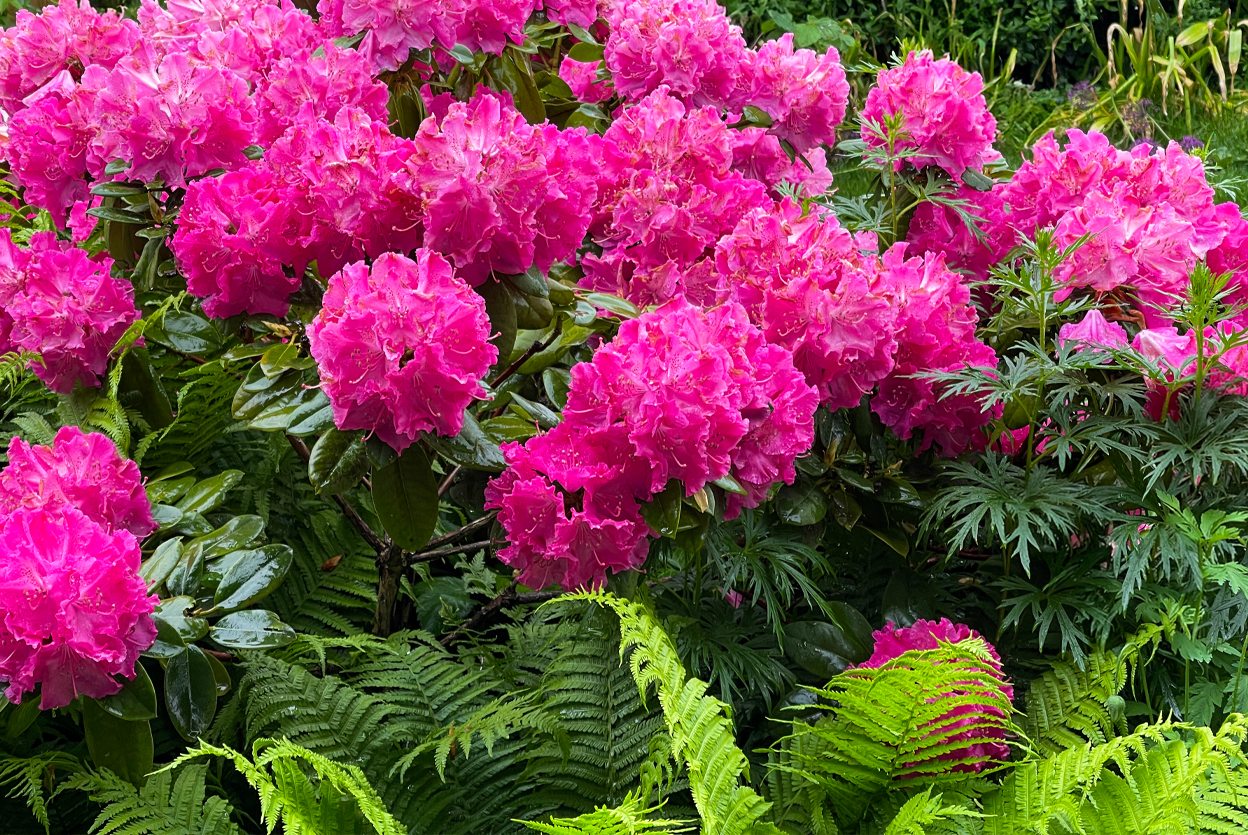
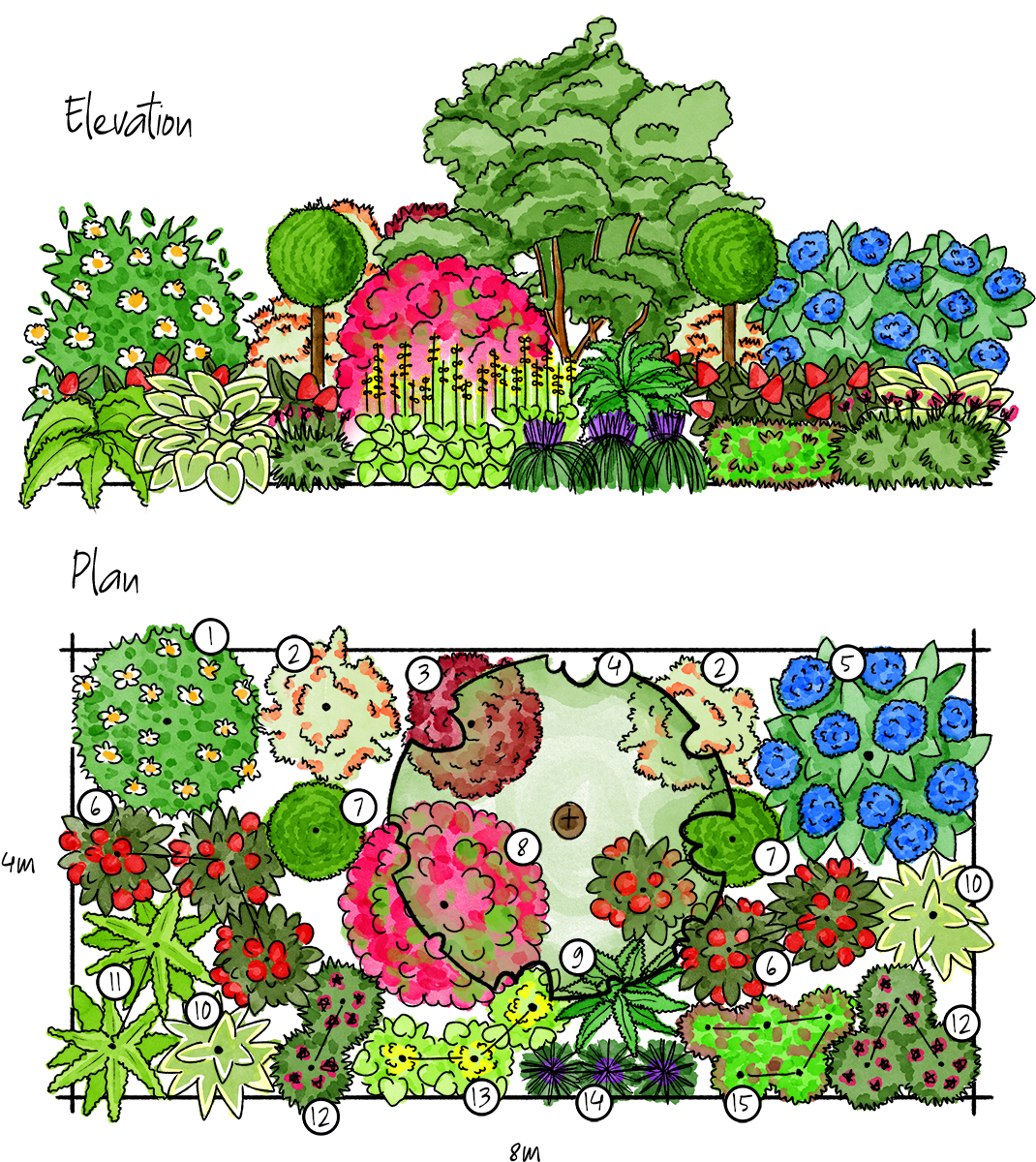
Acidic soil tolerant planting scheme
Planting in acidic soil offers unique opportunities to grow a diverse range of plants. Acidic soils, typically with a pH below 6.5, are common in woodland areas and regions with high organic matter. Sandy soil is often acidic because water percolates through it quickly, leaching away alkaline minerals, resulting in a higher concentration of acidic compounds. Lower pH soils are often determined by the underlying rock type. Granite and sedimentary rocks, like shale and coal, erode away and release acidic substances. Using ericaceous compost, which has a pH of between 4.5 and 6,helps to create the optimal growing conditions for acid-loving plants by maintaining the ideal acidity and providing essential nutrients tailored to their needs.
Instead of trying to alter the soil’s natural chemistry, choosing species that thrive in the conditions leads to more successful and sustainable gardens. By using plants that are naturally suited to acidic soils, we can create gardens that are both resilient and colourful, with year-round interest and minimal need for pesticides and fertilisers. Acidic soils are discovered through routine pH testing, a valuable step in understanding site conditions before planting. For guidance on identifying and working with acidic soils, read our blog on planting for acidic soils.
This planting scheme has been developed to showcase a diverse range of plants that perform well in acidic soils. It combines evergreen structure, seasonal flowering, and textural contrast to create a scheme that is both practical and aesthetically pleasing. The selection includes shrubs, perennials, and groundcover species that are well-suited to moisture-retentive, humus-rich soils, often found in naturally acidic environments.
Evergreen shrubs such as Camellia japonica, Pieris japonica, and Skimmia japonica provide year-round structure and interest. These species are valued for their glossy foliage and seasonal flowers, with Camellia japonica ‘Silver Anniversary’ offering elegant white blooms in late winter to early spring. Pieris japonica ‘Variegata’ adds visual contrast with its variegated leaves and cascading flower clusters, while Skimmia japonica contributes dense, compact form and fragrant spring flowers.
Flowering shrubs such as Rhododendron ‘Germania’ and Hydrangea macrophylla bring vibrant colour to the scheme. Rhododendron ‘Germania’ produces large, bright pink blooms in spring, while Hydrangea macrophylla offers long-lasting summer flowers. Notably, the flower colour of Hydrangea macrophylla is influenced by soil pH. In acidic soils, blooms tend to be blue, while in more alkaline conditions, they shift towards pink. This natural variation can be used to reflect soil conditions and add dynamic interest to the planting.
Magnolia stellata is included for its early spring display of star-shaped white flowers, which appear before the foliage and provide a striking seasonal highlight. Leucothoe scarletta ‘Zeblid’ adds rich, burgundy-red foliage in autumn and winter, enhancing the scheme’s year-round appeal.
The underplanting includes ferns and shade-tolerant perennials that contribute texture and help suppress weeds. Polystichum setiferum and Dryopteris filix-mas offer finely divided fronds that create a soft, naturalistic feel. Hosta fortunei var. aureomarginata adds bold, variegated foliage, while Epimedium × versicolor ‘Sulphureum’ and Tellima grandiflora provide delicate flowers and groundcover. Liriope muscari contributes grassy foliage and late-season blooms, and Astrantia ‘Ruby Star’ offers intricate, deep pink flowers that attract pollinators.
Ilex crenata, used as a half-standard tree, introduces vertical structure and can be used to define focal points within the landscape. Its small, glossy leaves and compact habit make it a suitable alternative to the vulnerable Buxus sempervirens in acidic conditions.
This scheme is ideal for sites where acidic soils are present and where a long-lasting, low-maintenance planting solution is required. It supports biodiversity, offers seasonal interest, and provides a resilient, attractive planting palette that performs well in challenging soil conditions.
1. Camellia japonica‘Silver Anniversary’ 2. Pieris japonica ‘Variegata’ 3. Leucothoe scarletta ‘Zeblid’ 4. Magnolia stellata 5. Hydrangea macrophylla 6. Skimmia japonica 7. Ilex crenata (half-standard tree) 8. Rhododendron ‘Germania’ 9. Polystichum setiferum 10. Hosta fortunei var. aureomarginata 11. Dryopteris filix-mas 12. Astrantia ‘Ruby Star’ 13. Tellima grandiflora 14. Liriope muscari 15. Epimedium × versicolor ‘Sulphureum’
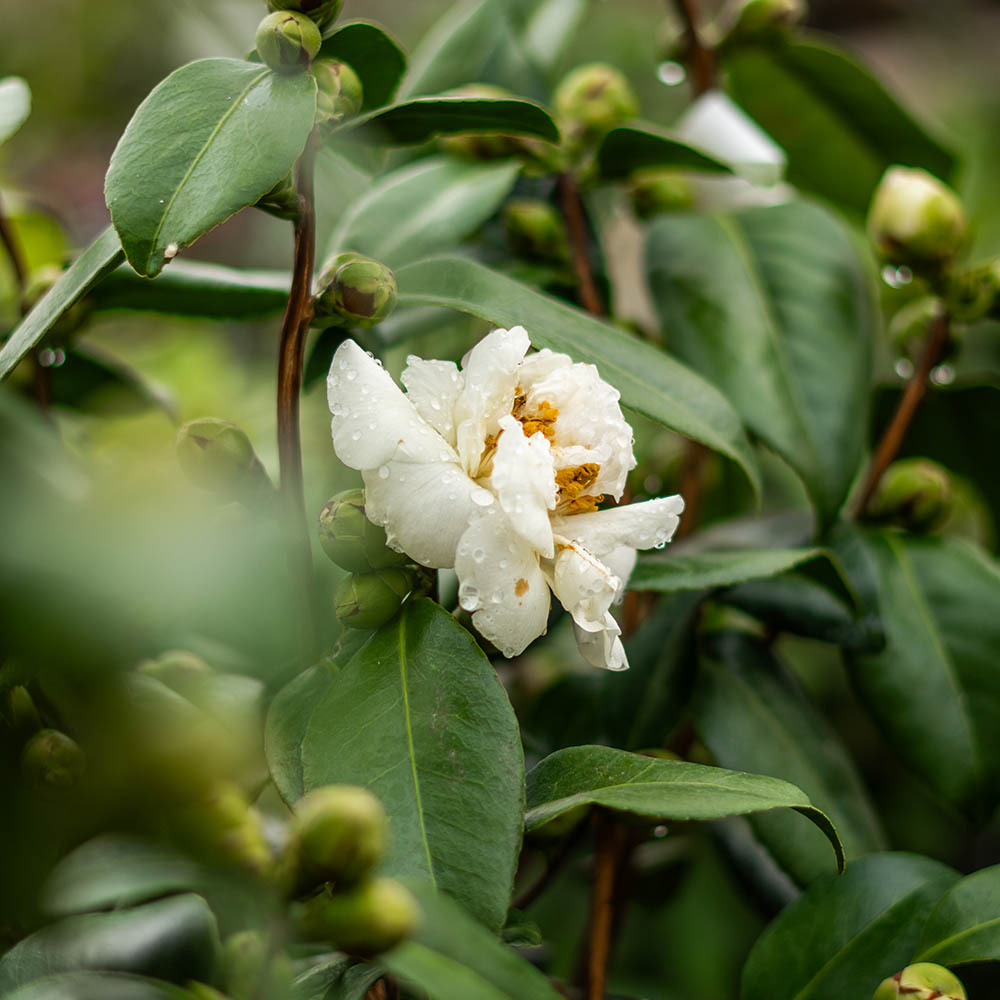
①
Camellia japonica ‘Silver Anniversary’
An evergreen shrub with glossy dark green leaves and elegant white blooms. Flowers appear in early spring and stand out against the foliage, adding a touch of brightness to shaded borders.
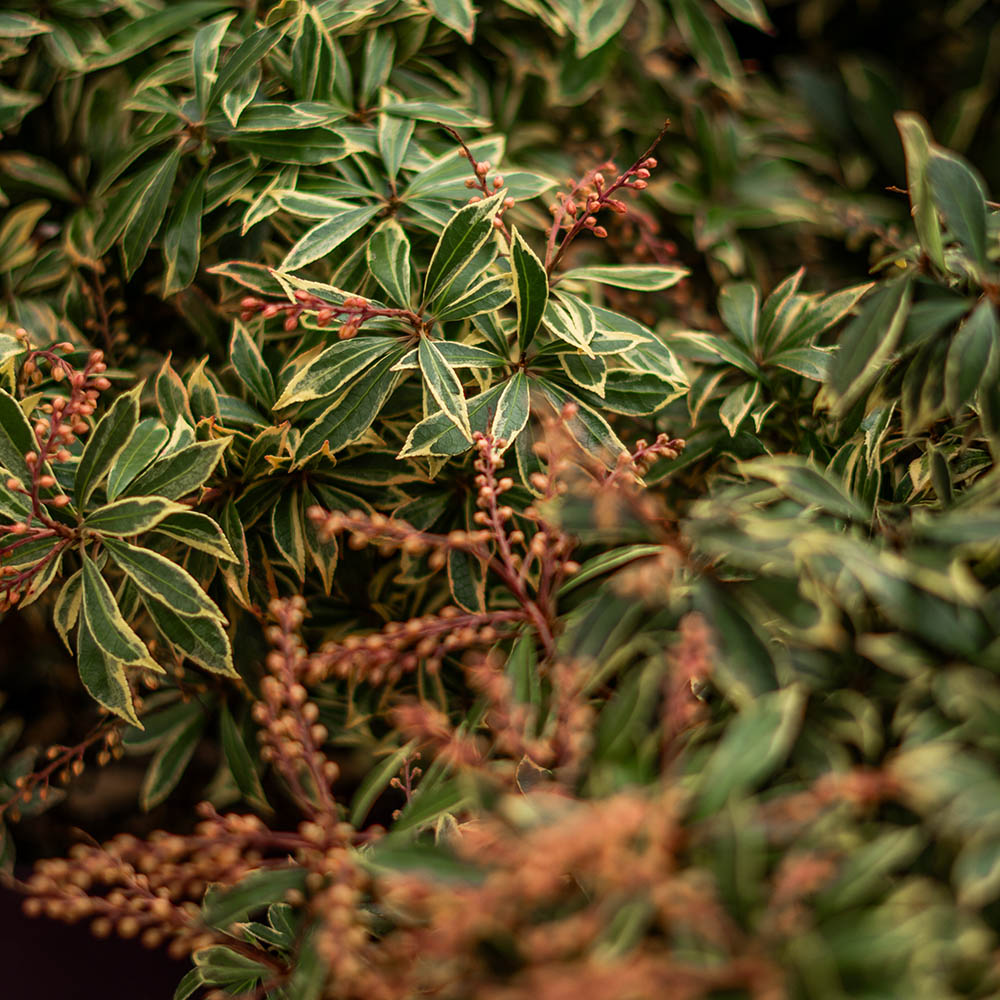
②
Pieris japonica ‘Variegata’
A slow growing, low maintenance shrub that has variegated, creamy white foliage, which starts out with a pink tint when it first emerges. Blooms racemes of bell-shaped, white flowers from March to April. Works well planted in flower borders.
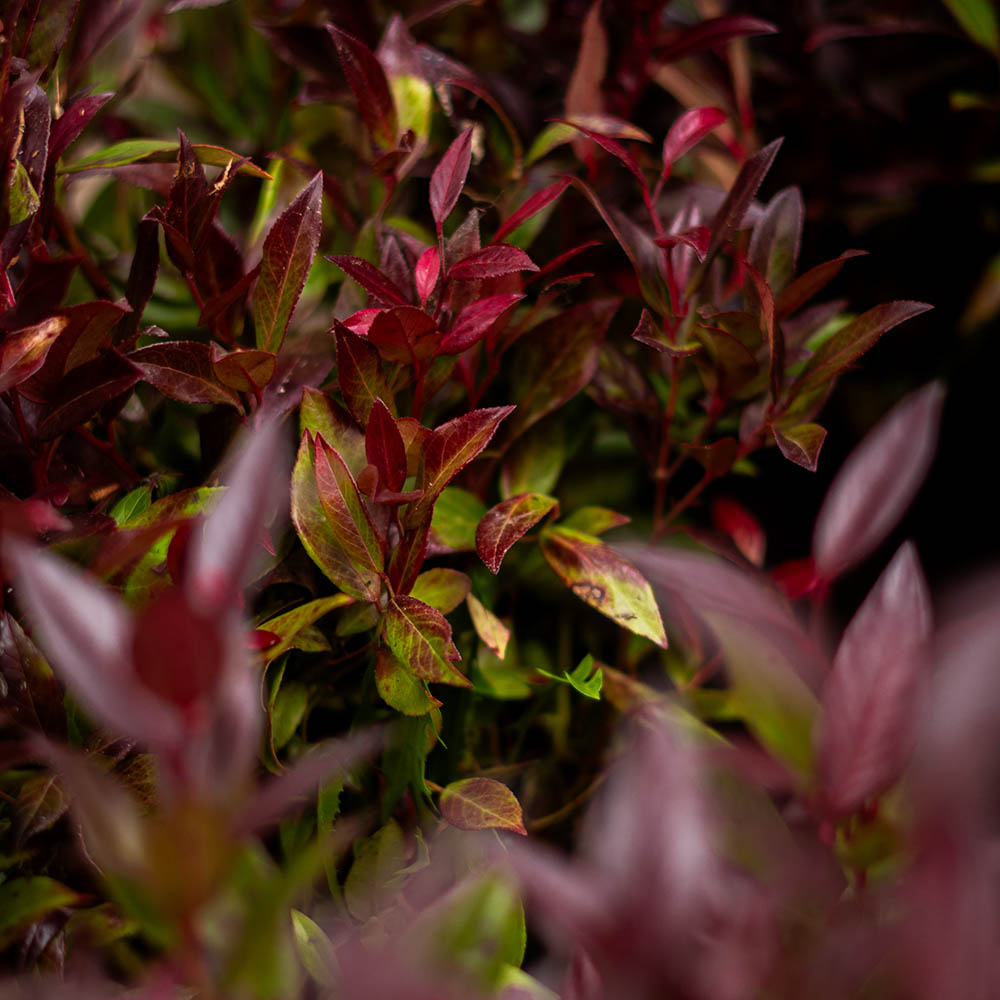
③
Leucothoe scarletta ‘Zeblid’
An evergreen groundcover shrub with foliage which emerges maroon, before it turns dark green with red edging, until it finally matures to bronze in autumn. Blooms white flowers in spring.
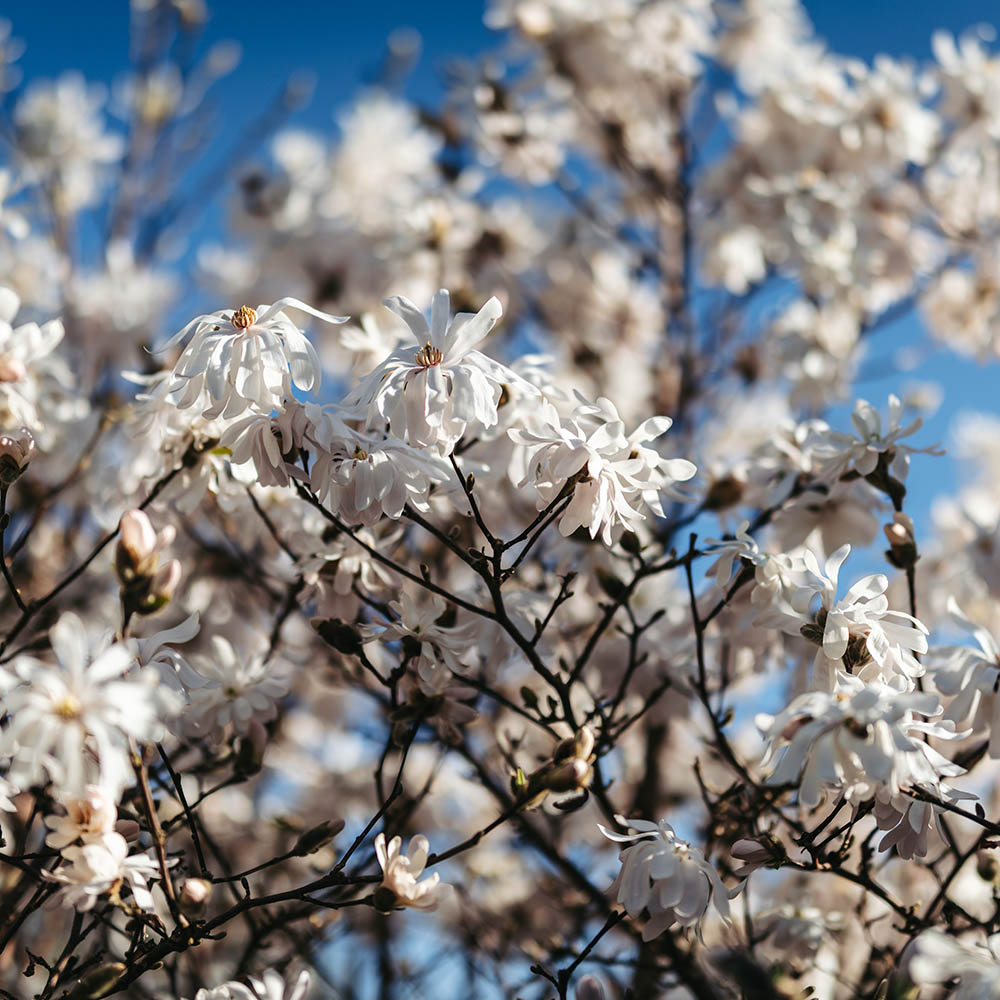
④
Magnolia stellata
A compact deciduous shrub with star-shaped white flowers that bloom in early spring. The bare branches are covered in blossom before the leaves appear, bringing light and charm to the garden.
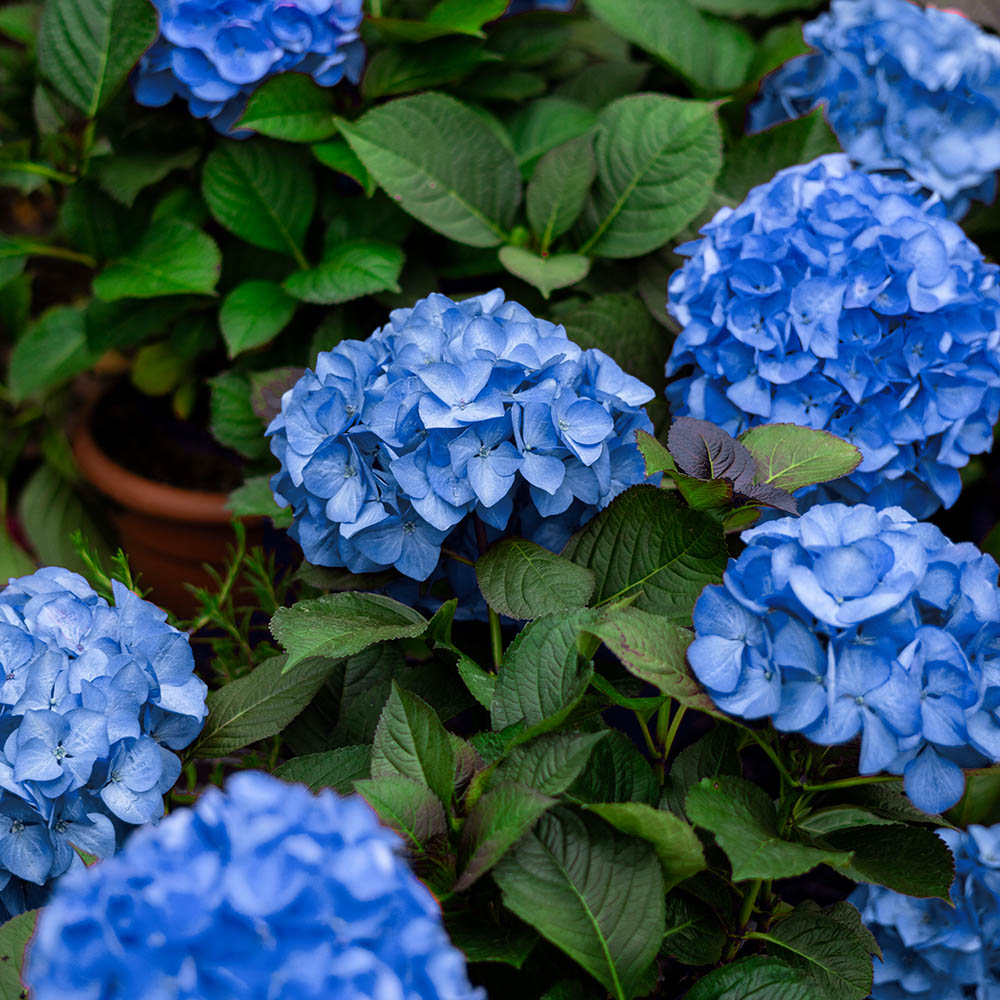
⑤
Hydrangea macrophylla
A rounded shrub with mopheads or lacecaps, depending on the variety, and mid green foliage. Flowers come in a range of colours, including white, pink, blue, and purple.
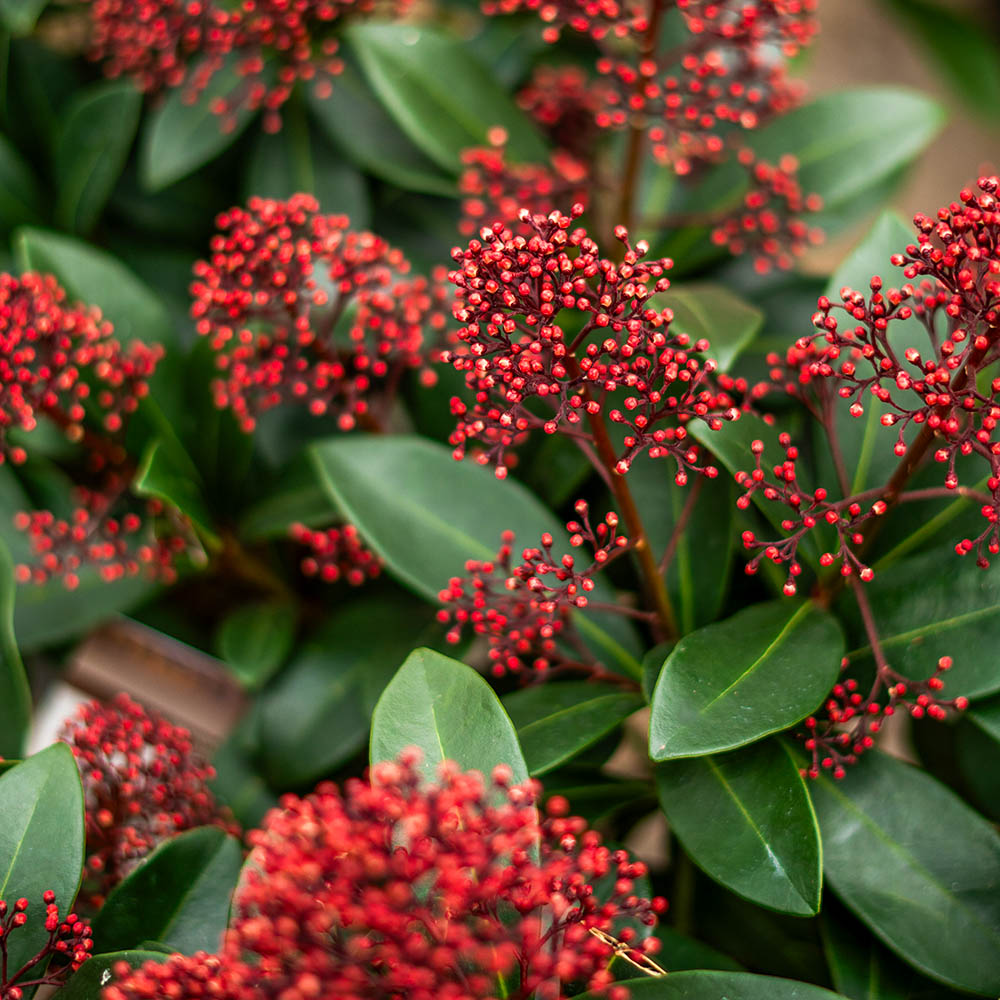
⑥
Skimmia japonica ‘Rubella’
Compact evergreen shrub with glossy green leaves. Clusters of red flower buds appear in autumn and eventually open as fragrant white flowers in spring.
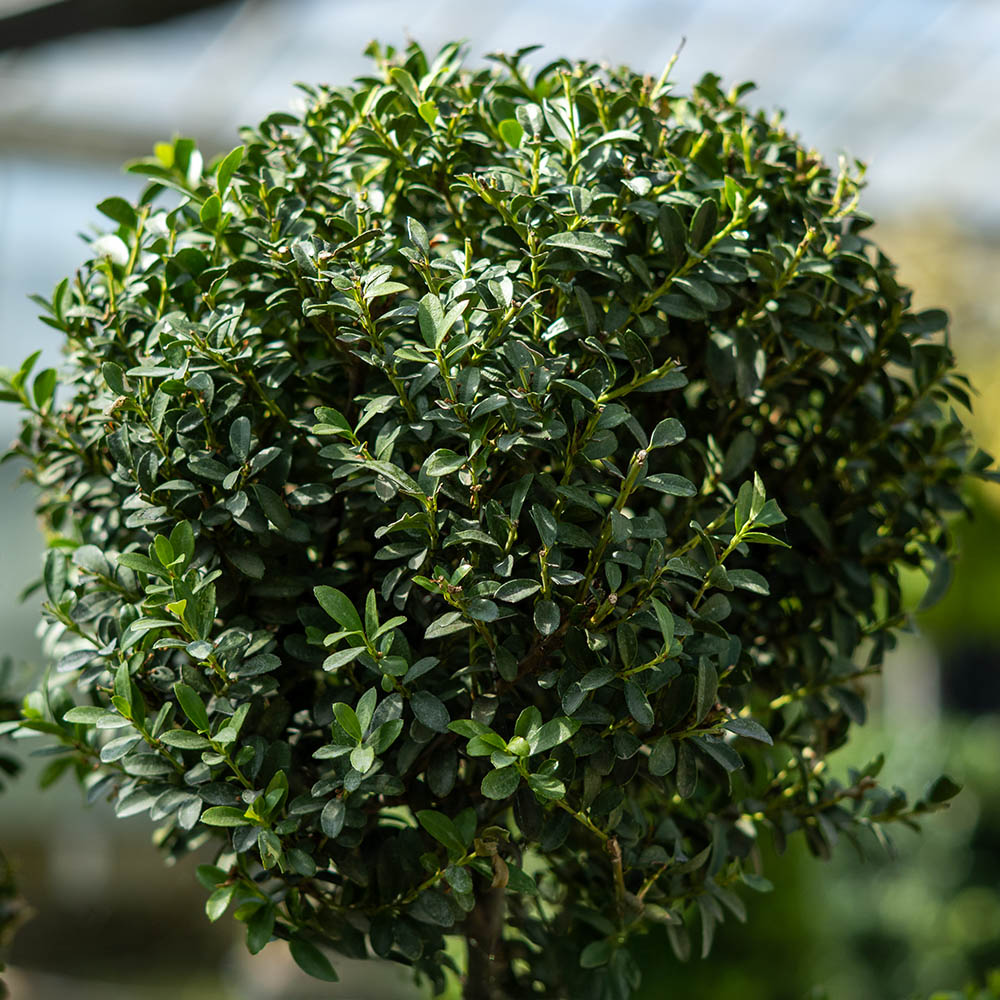
⑦
Ilex crenata (half-standard tree)
A slow growing evergreen species with a compact, dense habit. Ideal for topiary as its small, green, glossy leaves offer a similar look to Buxus sempervirens.
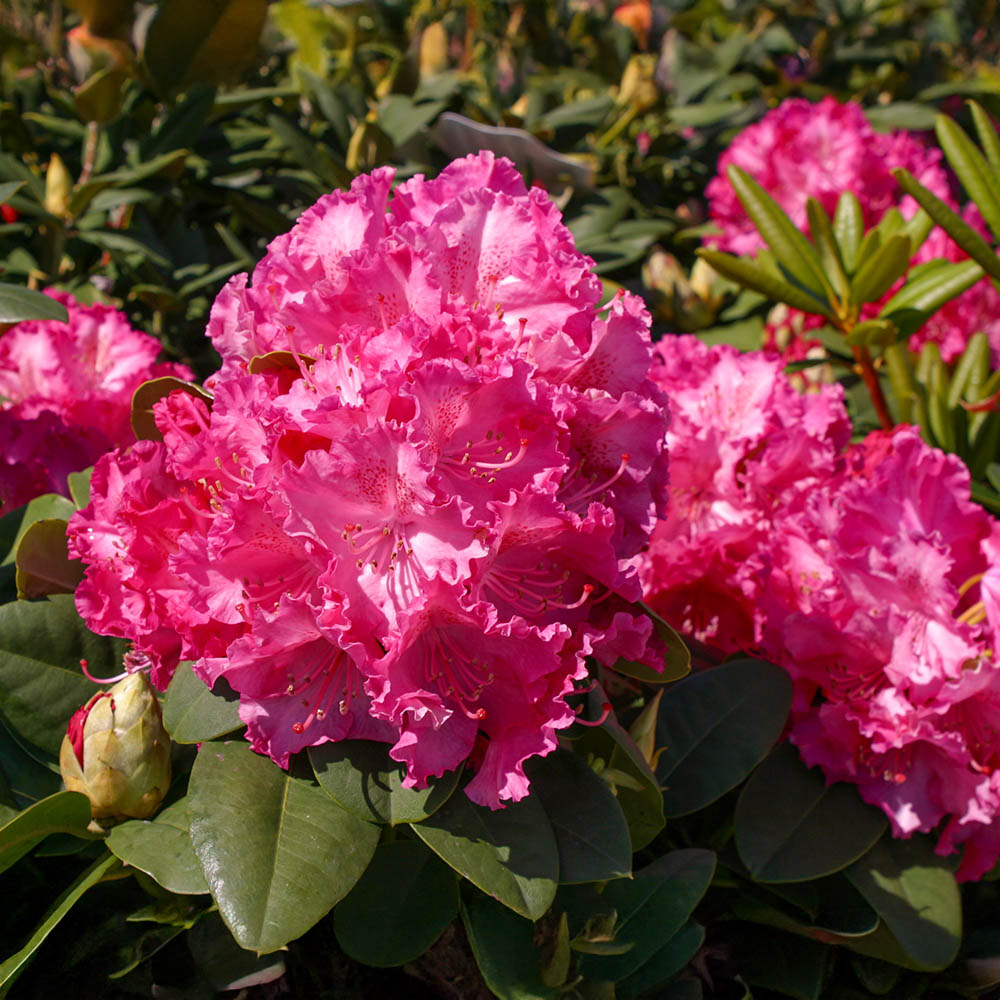
⑧
Rhododendron ‘Germania’
An evergreen shrub with large, deep green leaves and showy pink flowers that bloom in late spring. Its bold blooms create a striking display and brighten partially shaded spots.
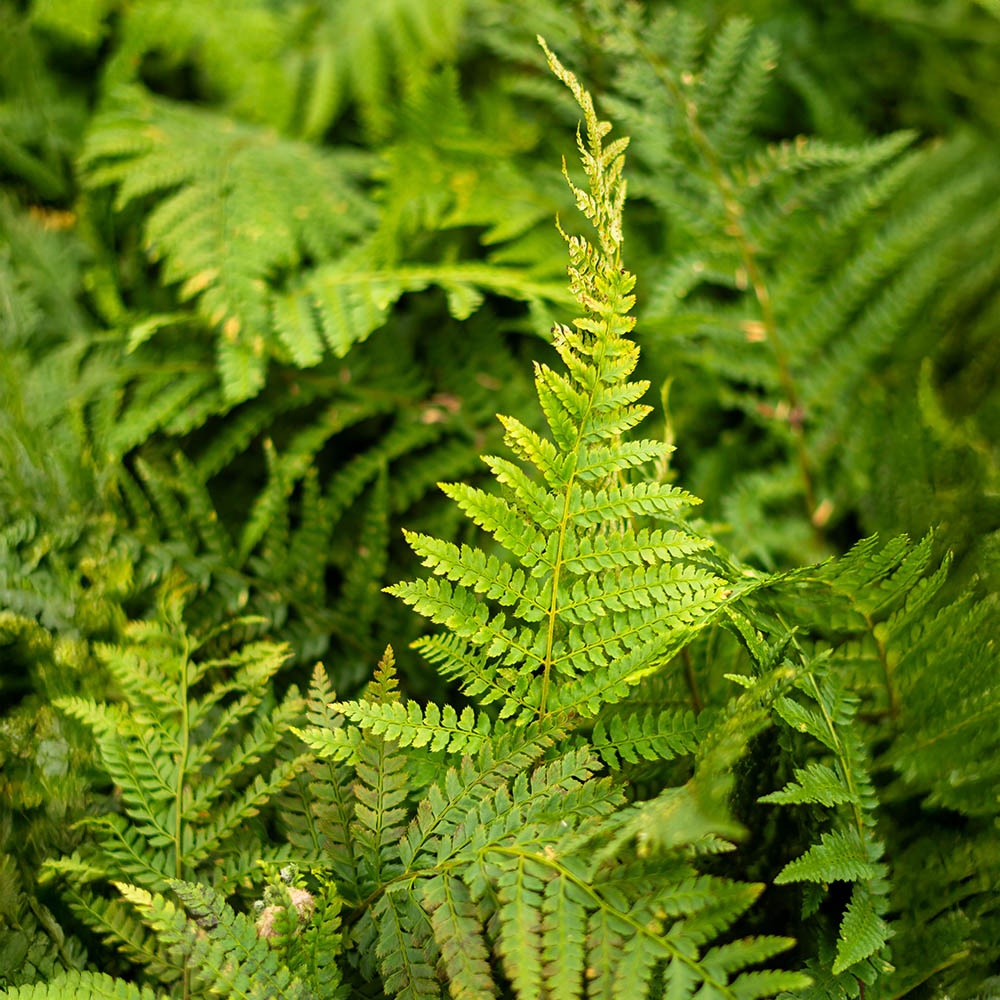
⑨
Polystichum setiferum
A large, native, evergreen, tufted fern with dark green, softly arching fronds and orange-brown stalks. The fronds emerge upright in habit until they unfurl and open.
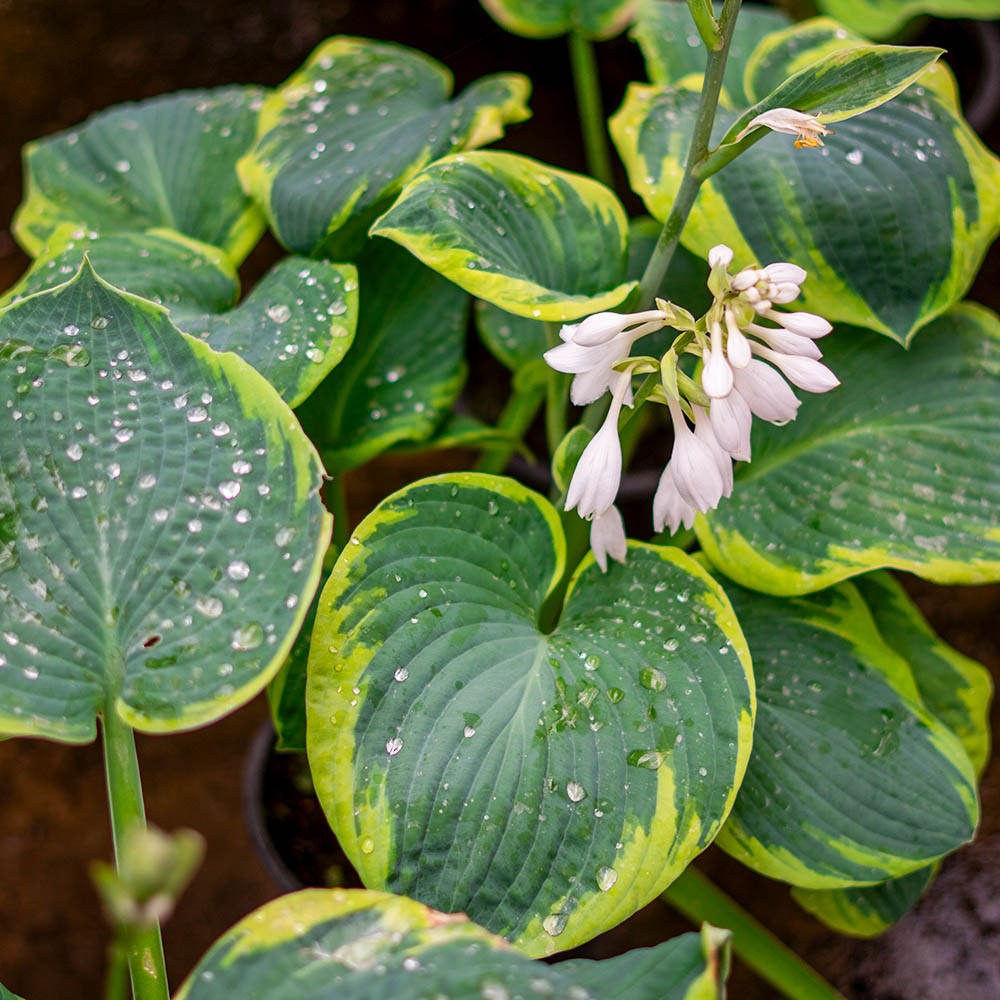
⑩
Hosta fortunei var. aureomarginata
A perennial forming a clump of rich green, heart-shaped leaves with yellow margins. Blooms clusters of funnel-shaped, mauve flowers in summer.
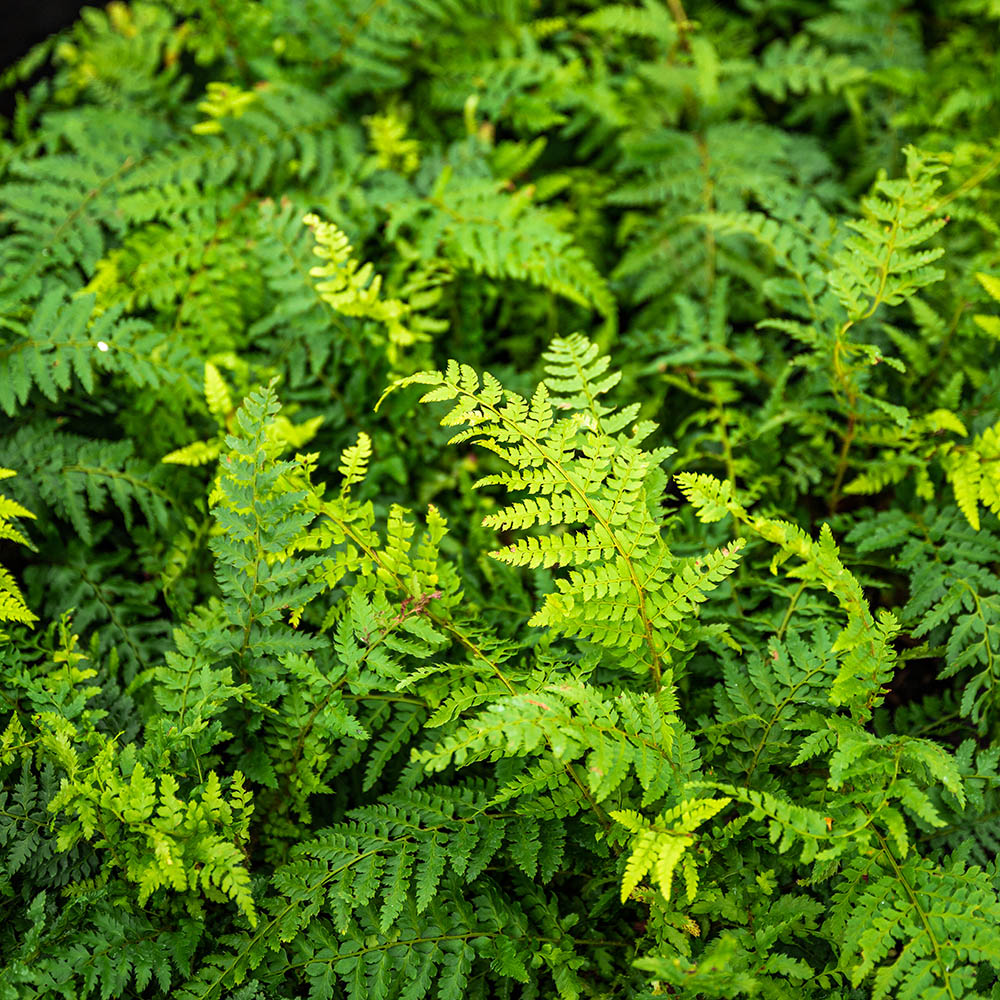
⑪
Dryopteris filix-mas
A large, deciduous male fern with green, feathery, lance-shaped fronds forming a shuttlecock shape, which transform to a coppery shade in autumn.
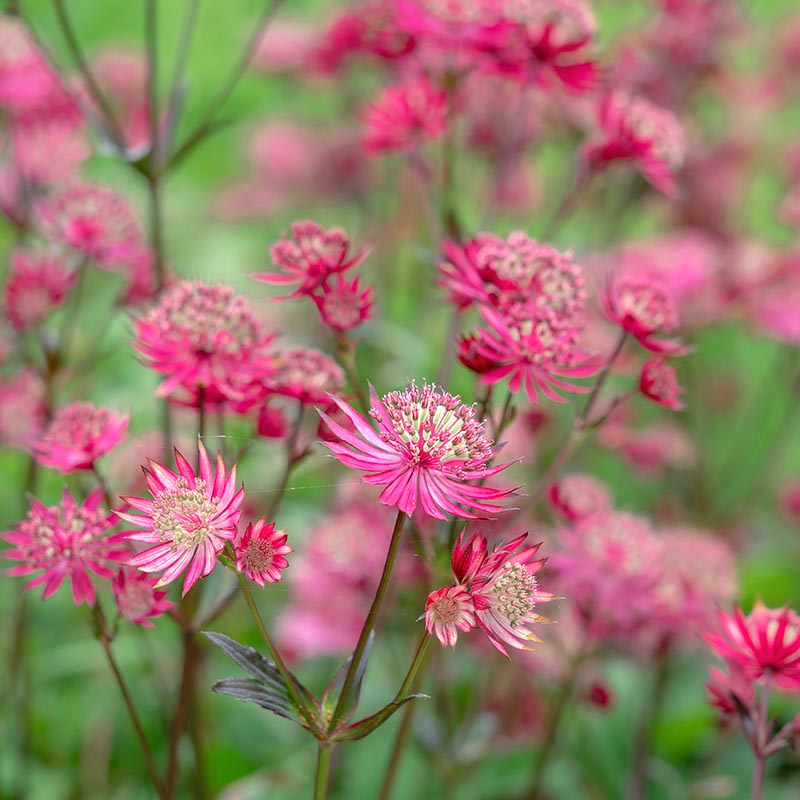
⑫
Astrantia ‘Ruby Star’
A perennial with masses of starry, ruby red flowers from June to September, and vibrant red stems in summer. Its flowers stay upright as it dies back at the end of the year.
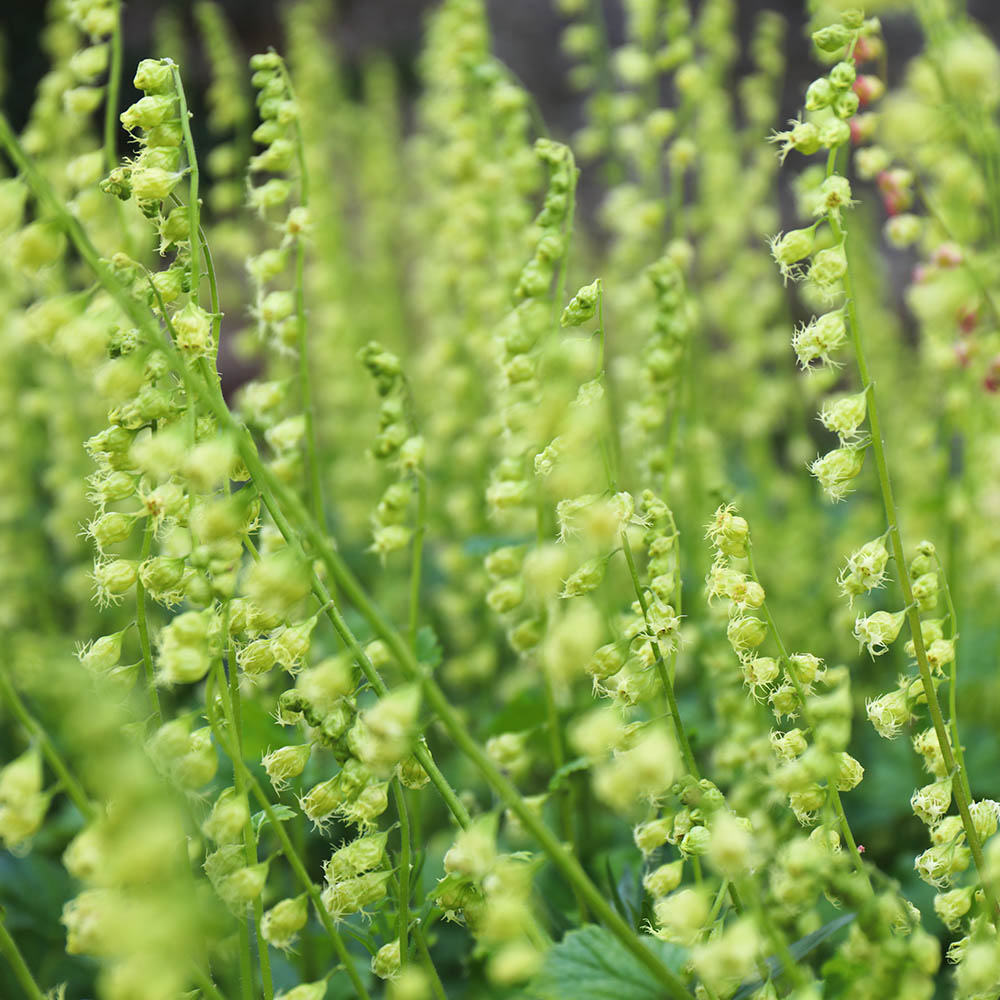
⑬
Tellima grandiflora
A perennial with scalloped, hairy, emerald green foliage and tall spikes of bell-shaped, green-white flowers. Lovely as part of a woodland garden.
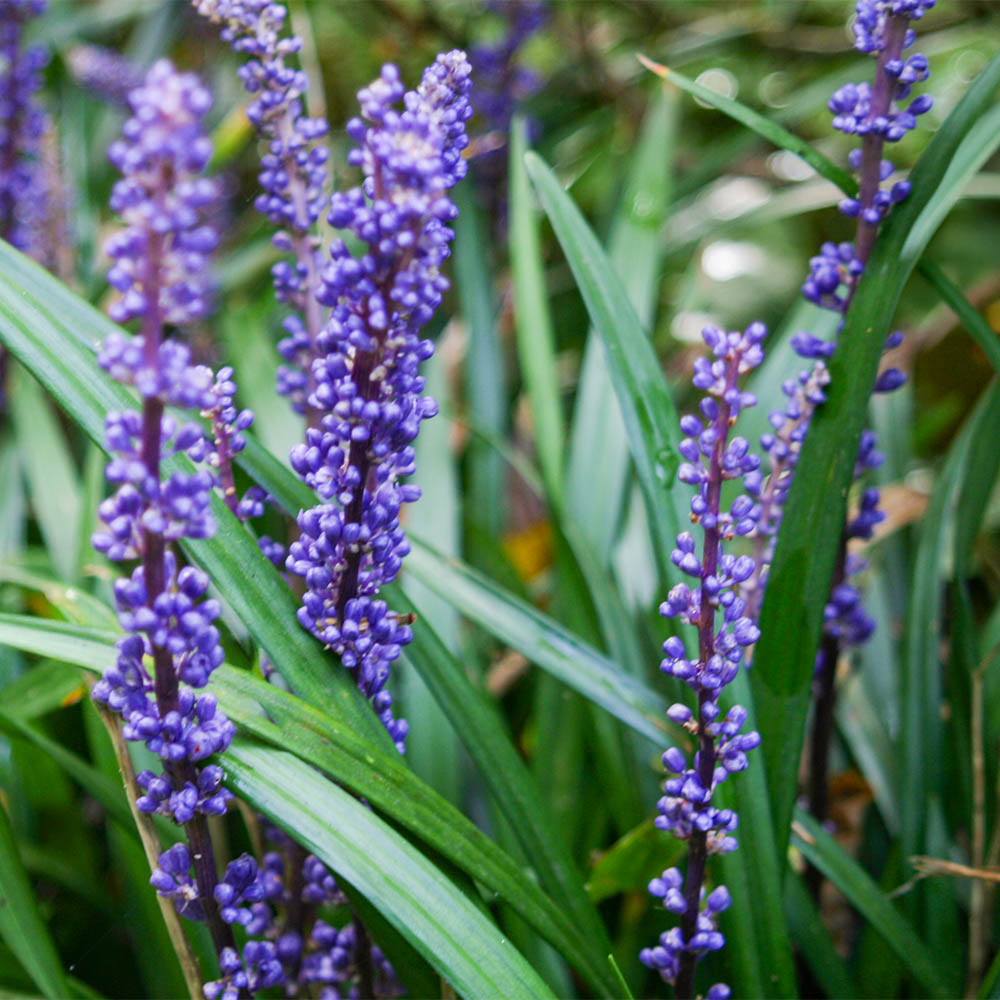
⑭
Liriope muscari
An evergreen grass with dense, tufted clumps of dark green, leathery leaves. Adds a pop of colour in autumn with its spikes of blue-purple flowers, which are later followed by black berries.

⑮
Epimedium × versicolor ‘Sulphureum’
A perennial with large, daisy-like, yellow flowers with black-brown centres from summer to autumn. Rudbeckia fulgida var. sullivantii ‘Goldsturm’ is particularly striking when planted in drifts and works well combined with ornamental grasses.

